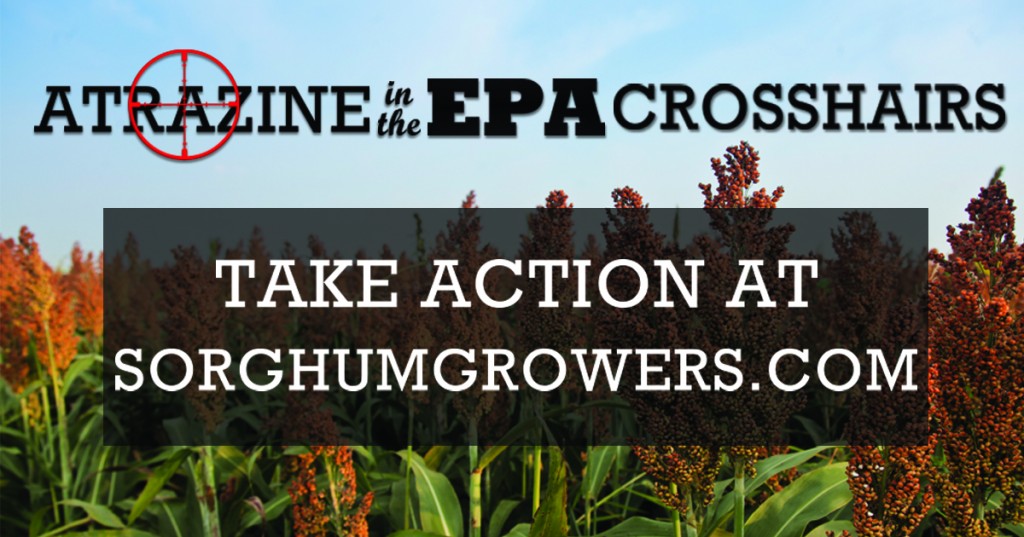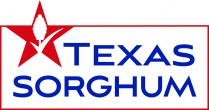Comment Today on Need for Atrazine, Propazine—Atrazine and propazine are under attack by the Environmental Protection Agency. Despite science-based regulations demonstrating the safety of these chemicals for more than 50 years, the EPA’s hyperactive regulatory machine threatens to render these important crop protection tools useless in controlling weeds on 90 percent of the acres in the U.S. Weigh in on how EPA’s draft Ecological Risk Assessments put farmers at an economic disadvantage and submit your own comments before October 4, 2016, at http://sorghumgrowers.com/sorghumalert.

Agricultural Loan Guarantee Program—Open enrollment is currently underway for the ALG Program. The program provides financial assistance to establish or enhance farming or ranching operations or to establish an agricultural-related business. Assistance is available in the form of guarantees based on a tiered structure, not to exceed $750,000 or 70% of the loan amount—whichever is less.
There are three options depending on the terms of the loan:
- $250,000 or 90% of the loan amount, whichever is less
- $500,000 or 80% of the loan amount, whichever is less
- $750,000 or 70% of the loan amount, whichever is less
Young Farmer Grant (YFG) Program: TAFA offers a semiannual grant program to eligible applicants who are at least 18 years of age but younger than 46 years of age and who are engaged in creating or expanding agriculture in Texas. The applicant must be able to make dollar-for-dollar matching expenditures to sustain, create or expand the proposed project. Individual grants may range from $5,000 to $10,000.
Interest Rate Reduction (IRR) Program: TAFA works with the Texas Comptroller to facilitate lending at below market rates to qualified applicants for projects that will establish, enhance or expand an agricultural operation in Texas.
Young Farmer Interest Rate Reduction (YFIRR) Program: Young farmers can see greater reductions in their interest costs through this program. Any person who is at least 18 years of age but younger than 46 years of age and proposes to use loan proceeds in a manner that will help accomplish the state’s goal of fostering the creation and expansion of an agricultural business in Texas is eligible.
For additional information including program specific details click here. For questions contact TDA’s Grants Office at 512-463-6908 or by email at Grants@TexasAgriculture.gov.
2016 NASS Cash Rent Statistics Released—The 2016 NASS results of their Cash Rent surveys have been released. The results are obtained by a survey of farmers conducted by the United States Department of Agricultural National Agricultural Statistics Service. Every year, NASS collects cash rent data by state for irrigated cropland, non-irrigated cropland, and pastureland. In even numbered years, they break this data down by county. The county-level reports should be out in September. For now, we have the national and state-by-state results. Nationwide, cash rental rates have dropped in the last year. Here are the results of the cash rent survey:
- Pastureland: $13/acre (down $1.00 from 2015)
- Non-irrigated cropland: $125/acre (down $8.00 from 2015)
- Irrigated cropland: $206/acre (down $3.00 from 2015)
For Texas, the results were mixed with an increase in irrigated cropland rates, but decreases for dryland cropland and pasture. The survey results are as follows:
- Pastureland: $6.80/acre (down $0.70 from 2015)
- Non-irrigated cropland: $27.00 (down $2.00 from 2015)
- Irrigated cropland: $90.00 (up $8.00 from 2015)
In order to view the average lease rates for irrigated cropland, non-irrigated cropland, and pastureland in each of the 50 states, click here. If you are interested in more information on leasing, join Shannon Ferrell and Tiffany Dowell Lashmet on Wednesday (Aug. 17), at 11 central time for our free webinar on Agricultural Leases. For more information on the webinar, click here. The post 2016 NASS Cash Rent Statistics Released appeared first on Texas Agriculture Law.
TGSP Approves SCA Insecticide Decision Aid Research Study— Development of a Decision Aid for Control of the Sugarcane Aphid in Grain Sorghum after the Initial Insecticide Application; Co-Investigators: Pat Porter, Blayne Reed, Kerry Siders, Tommy Doederlein, and Katelyn Kowles. Collaborator: Ed Bynum. (Extension Entomologist, Extension Agent—IPM.)—Until sugarcane aphid resistant hybrids become available it is likely that much of the sorghum acreage on the High Plains will exceed the economic threshold and require at least a first insecticide application. However, there is no clear economic threshold for deciding to make a second, follow-up insecticide application and growers are faced with the possibility of applying insecticides that are not needed or not applying insecticides that are needed. Through this study a decision guide will be developed, allowing producers to quickly determine when to apply second and subsequent insecticide applications. The plant damage to yield loss relationships documented through this work will also assist in getting Section 18 emergency use registrations for new insecticides. On-farm trials will be conducted in Hockley/Cochran/Lamb (Kerry Siders) and Dawson/Lynn (Tommy Doederlein) counties. The same experimental design will be used in all on-farm trials. Pat Porter and Katelyn Kowles will travel to Dawson/Lynn counties to help collect data. An expanded trial at the Lubbock Research and Extension Center will follow the same protocol but will be conducted on sugarcane aphid susceptible sorghum (DK36-06) and sugarcane aphid resistant sorghum (DK37-07) in order to determine whether resistant sorghum has a different yield to leaf damage rating relationship than does susceptible sorghum. Blayne Reed and his field scouts will travel to Lubbock to help collect data.
Market Perspectives–Sorghum: Net sales of 60,400 MT for 2015/2016 were reported for China (49,600 MT, switched from unknown destinations), unknown destinations (8,000 MT), Colombia (2,500 MT), and Mexico (400 MT). For 2016/2017, net sales of 55,500 MT were reported for unknown destinations. Exports of 241,400 MT were up noticeably from the previous week and from the prior 4-week average. The destinations were China (213,000 MT), Colombia (27,500 MT), and Mexico (1,000 MT). To read the entire Market Perspectives, provided by the US Grains Council, click here.











